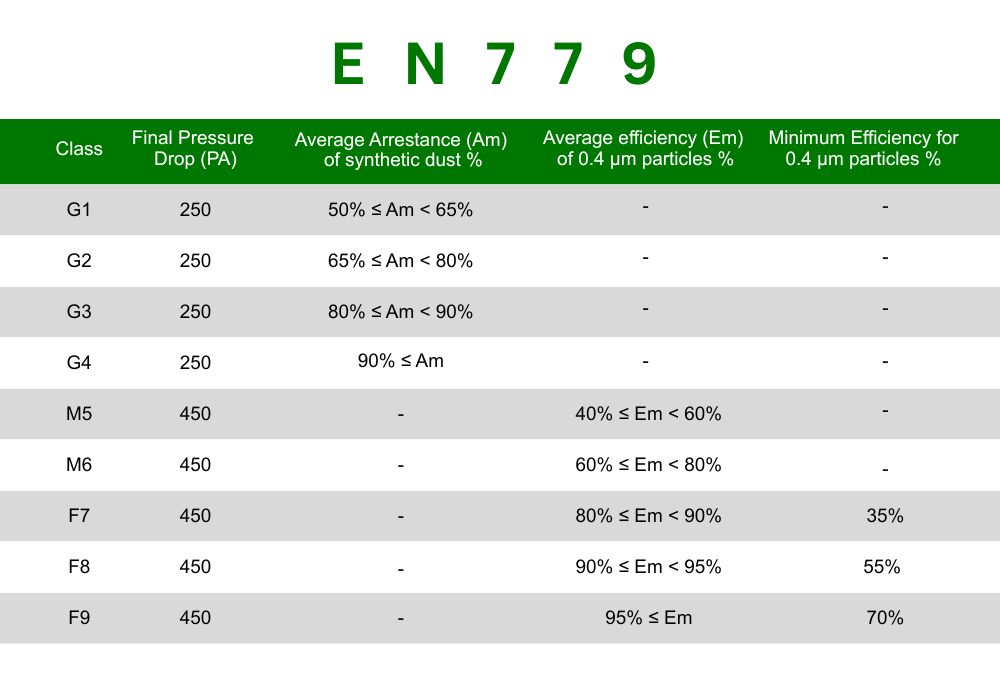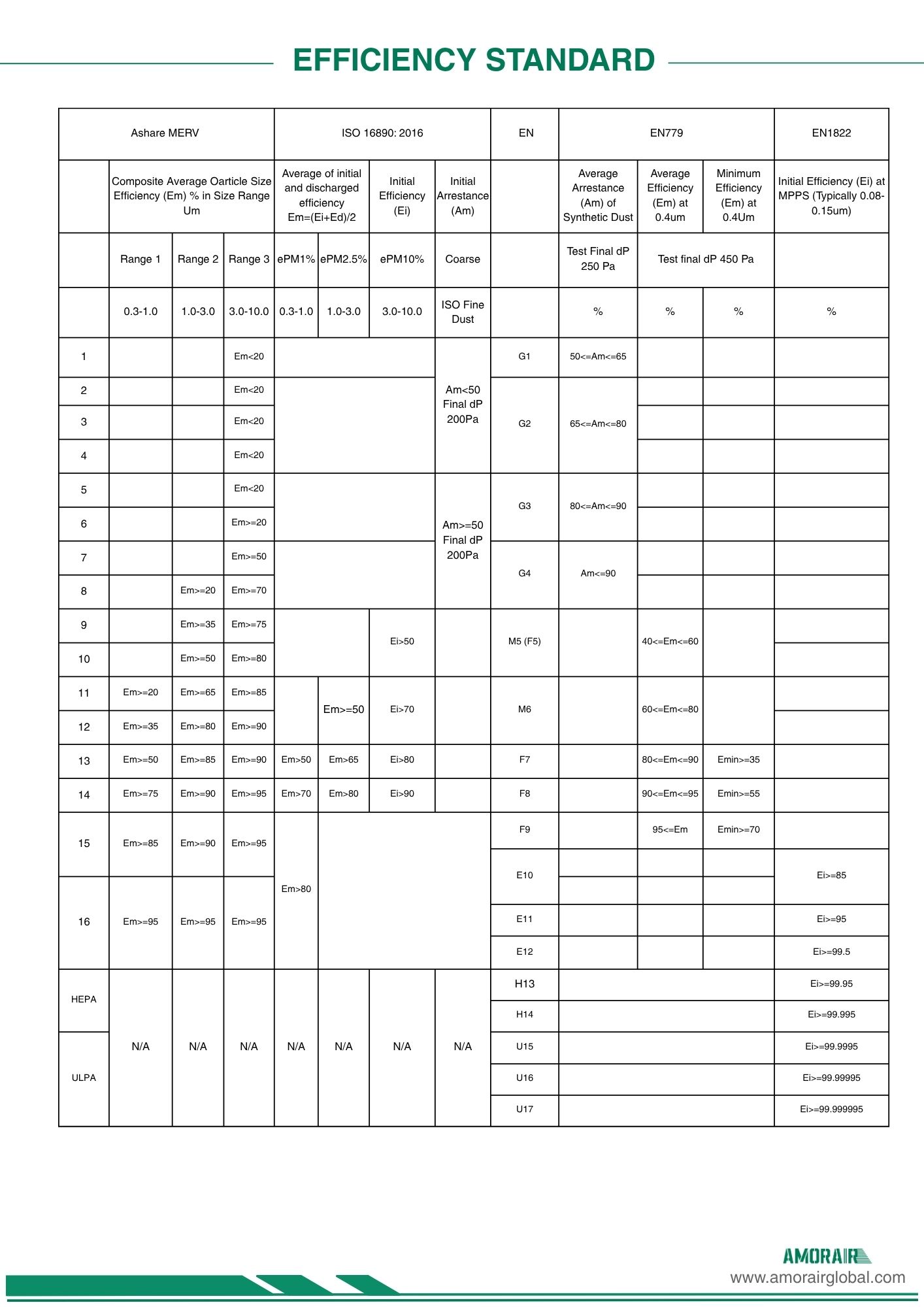For air filter sellers, the first lesson is to understand the various standards in the filter industry. This is especially important for cross-border sellers, as standards vary by country and region. For example, international standards -ISO 29463/ISO 16890, European standards-EN 1822/EN 779, and the U.S. standard-ASHRAE 52.2. Under different standards, filters are classified into various grades based on their efficiency. Today, we will focus on EN 1822 and EN 779.
Note: A conversion table for different standards will be included at the end of the article.
EN 1822 was introduced in 1998 and is an important European standard for testing filters. It is used to assess the effectiveness of high-efficiency air filters. According to this standard, filters are categorized as follows:
>>> EPA Filters: Efficiency grades E10,E11 and E12.
>>> HEPA Filters: Efficiency grades H13 and H14.
>>> ULPA Filters: Efficiency grades U15,U16 and U17.

From the table, we can see the filtration efficiency corresponding to each grade. For instance, a HEPA H14 filter must have a minimum efficiency of 99.995% for particles of 0.3 microns or larger. This means it can remove at least 99.995% of these particles and all larger ones.
EN 779 is used to classify HVAC filters. The evaluations are based on average dust spot efficiency (Am) and average filtration efficiency (Em). Currently, filters with a dust spot efficiency below 20% are classified as grades G1 to G4, while those above 20% are classified as grades M5 to F9.

In summary, the main difference between EN 1822 and EN 779 is that EN 779 targets HACV filters, while EN 1822 focuses on HEPA/ULPA filters.
Conversion Table for Different Standards

For air filter sellers, the first lesson is to u
Whether as consumers or producers, we understand
As a production environment that represent the h
Contact: +1(213)786-4191
Phone: +1(213)786-4191
Tel: +1(213)786-4191
Email: Info@amorairglobal.com
Add: 1476 W 9th St Upland, CA, United States 91786